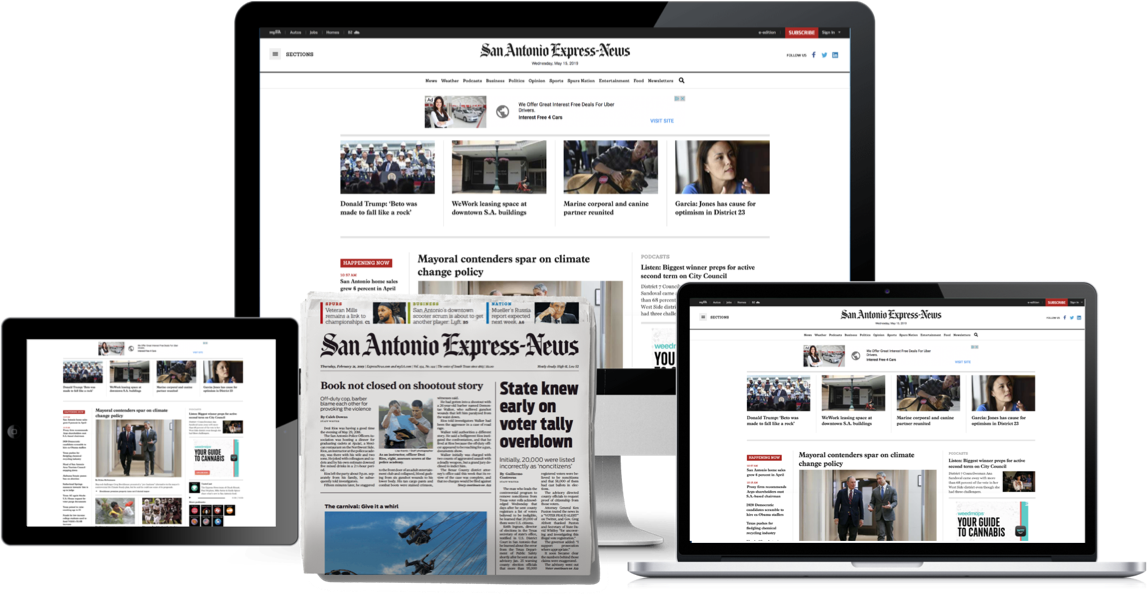The Popular News Statements
Wiki Article
Facts About Popular News Revealed
Table of ContentsHow Popular News can Save You Time, Stress, and Money.Facts About Popular News UncoveredThe 7-Minute Rule for Popular NewsNot known Facts About Popular News
Age is also a consider the way individuals check out the function of social media sites. More youthful social media information consumers are most likely to claim it has actually influenced their understanding right. About fifty percent of social media sites information customers ages 18 to 29 (48%) say news on social media sites makes them far better educated, compared to 37% of those 30 to 49, 28% of those 50 to 64, and 27% of those 65 and older.Reporters weigh news worths when identifying whether to cover an event or announcement. Here are the values that we think about when developing an outreach approach. Arguably the most essential element of newsworthiness is whether or not the story being connected effects an information outlet's target market. Allow's envision researchers have found an economical option to a common issue.
Study on a state's brand-new tax code likely won't generate the exact same passion throughout state boundaries. Sometimes experts can aid center a bigger nationwide story that affects more than just a city or state.
If you are releasing newsworthy research, loop in MarComm prior to the post being published to make sure that the pitch can stress the newest component of the tale: the publication of the study. Events and announcements that include top-level numbers are more probable to create media protection. Brows through from nationwide numbers commonly require months of preparation due to anticipated neighborhood passion.
The 8-Minute Rule for Popular News
Stories frequently include some sort of problem. By meaning, these stories are generally debatable to some extent. Luckily, college team and faculty are typically perceived as objective professionals. We can assist reduce potential reputational threat with these stories while also increasing the probabilities of producing insurance coverage. While much of the above information values are interwoven, human interest stories typically stand apart.Human rate of interest elements can include information value to other tales that could show up to be lacking in the other values. The novelty or curiosity of a situation can assist influence whether or not an information outlet is likely to cover a tale. While this is not an extensive list, inspecting to see if your story or event has these top qualities prior to contacting us will help you figure out which aspects hold one of the most news value.
The research locates that slightly over half of all U.S. grownups sign up for news in some formand about fifty percent of those to a newspaper. And unlike the idea that youngsters will certainly not spend for information due to the fact that information on the net is cost-free, nearly 4 in 10 grownups under age 35 are spending for news.
There is also significant evidence that even more consumers could begin to pay for news in the futureif authors can recognize them and offer them find here well. Fifty percent of those that do not spend for information actively choose information and resemble clients in numerous means. And virtually 2 in 10 of those that do not register for news currently indicate they are inclined to begin to pay in the future.
The 5-Minute Rule for Popular News

People are drawn to news generally for 2 factors over others: A desire to be notified citizens (paper clients particularly are highly inspired by this) and since the publication they subscribe to excels at covering certain topics about which those clients specifically care - Popular News. While there are a host of factors, the No
Greater than 4 in 10 additionally mention the fact that loved ones sign up for the very same product. More than a 3rd of individuals state they initially subscribed in action to a price cut or promo. In print, people likewise are relocated greatly to subscribe to obtain coupons that conserve them money, something that has untapped implications in digital.

Rumored Buzz on Popular News
We asked everybody that informed us they have a routine free source of information exactly how likely they would certainly be to pay for it. Greater than a quarter (26 percent) claim they would be at the very least somewhat most likely to begin spending for itand 10 percent are very or very likely. These most likely payers tend to be news applicants, and they additionally tend to be individuals that currently spend for a news membership along with the resource they comply with free of charge.
Of those that do pay, 54 percent sign up for newspapers in print or electronically, which stands for 29 percent of Americans in general. A lot of them get a print publication together with their paper and pay for 2 to four news resources in total, some much more. And while 53 percent are long-time customers (5+ years), more than a quarter (27 percent) have acquired you can look here their newspaper registration within the previous year.

Report this wiki page